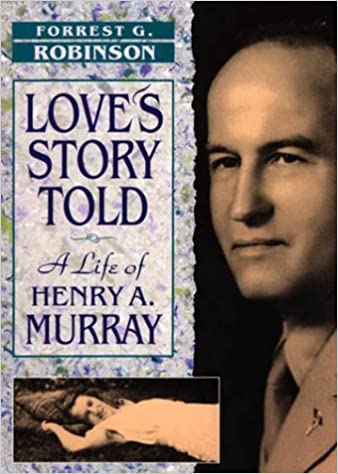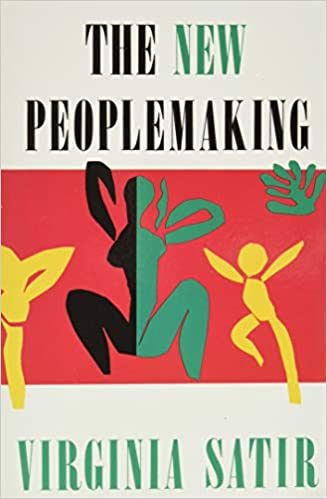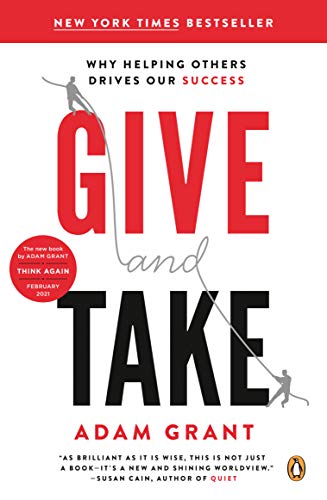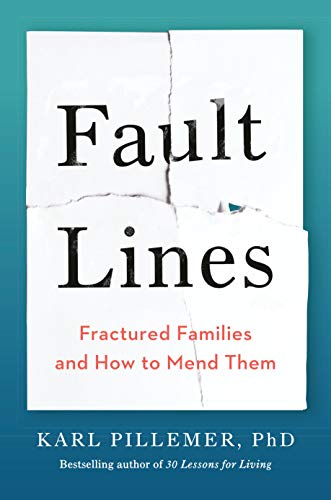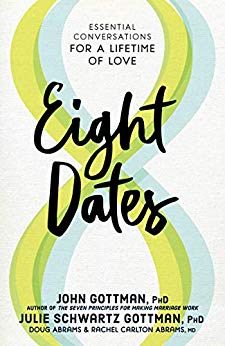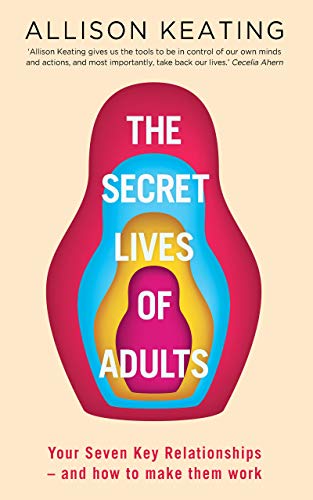Book Review-Stay: A History of Suicide and the Philosophies Against It

Anatomy of an Apology
An apology should be simple. Just say, “I’m sorry.” However, it’s not that simple. There are questions about why we apologize and what the other person expects when we do. An apology is often an attempt to regain or begin the process of rebuilding trust, but an apology done incorrectly can reinforce the negative predictions of future behavior – lack of trust – and make things worse, not better.
Our goal with an apology is never to make things worse. However, in too many situations, there are more hurt feelings than before the apology was issued. Here’s how to avoid them, why they happen in the first place, and ways to make relationships better. We start by examining the forms an apology can take.
The Forms
Though the contents of an apology change, they take a few basic forms:
- I’m sorry that I did something, and it harmed you. (True)
- I’m sorry that it happened. (Sympathy)
- I’m sorry [that I got caught]. (Consequences)
- I’m sorry that you felt that way. (Felt)
- I’m sorry, but… (But)
Let’s look at each of these in turn.
True Apology
Obviously, with a label like “true,” I’m conveying that this is the kind of apology that most of us want and the kind most likely to restore a relationship or begin the rebuilding process. It connects the behavior of the person apologizing to the impact to the recipient. Implicit in this is empathy, compassion for the person who was harmed, and the willingness to change behavior in the future.
The behavior change may come in the form of notification, protections, avoidance, or other ways to avoid harming the person again in the same or a similar way. Some of the best apologies explain the techniques that will be used to avoid the same situation again to help ensure that the recipient of the apology can distinguish this form from the others – and can rebuild their trust.
The need for specifics is largely dictated by the degree of remaining trust in the relationship. In relationships with a high degree of remaining trust, there’s often no need for the details. But in deep betrayals and harm where trust is nearly completely gone, explaining the “how” of the behavior change is essential – we’ll explain why when we get to the point of apologies in the first place.
Sympathy Apology
While technically not an apology at all, sympathy often starts with the words “I’m sorry” and therefore is often confused with an apology. It’s the first of the detractors that leads people towards believing that an apology has been issued when one has not.
When our son died, many people said, “I’m sorry.” They weren’t apologizing for their actions, because they weren’t involved. Instead, they were offering us their sympathy. At times, it’s all that can be offered, but it can be dangerous, because it’s too easy to perceive the recipient to be lower than the person who is uttering the words. Sympathy for a tragic event is understandable; sympathy for who someone is… it’s its own tragedy.
The risk with sympathy is that you separate yourself from the person with whom you’re trying to maintain or build a relationship. It’s only by trying to gain some degree of empathy (or understanding) and have compassion for them as well that you’re able to avoid the separation.
Consequences Apology
Another form of an apology takes on the unspoken characteristic. Instead of wishing to eliminate the pain in the recipient because of their actions, the person wishes they weren’t discovered. Often, this occurs with addicts, who are not yet willing to acknowledge and accept their addiction, as well as those who betray the trust of their partners by straying outside of their agreed-upon monogamous relationship. Whether married or just “going steady,” those who strayed outside the relationship are sometimes not sorry for their own behaviors but are instead sorry they got caught.
This detracts from true apologies, because instead of changing the behaviors that led to the hurt, the person offering the apology will simply redouble their efforts to keep their activities secret instead of legitimately changing their behaviors. This makes trust in the relationship harder – often unbearably hard.
Having believed that the addict would quit using or the other person would stay within the confines of their relationship boundaries – whatever they are – they’ll eventually be confronted with another example of the behavior. This is what leads to a cycle of apologies until the person receiving the apologies can no longer see a path to possibly rebuild trust.
Felt Apology
The felt apology skips over the actor’s behavior and expresses sorrow and sympathy for the way that the recipient feels. It takes no responsibility – and therefore may not lead to future behavior change. It can, however, be appropriate when there is no way to reasonably predict the other person’s reaction. Perhaps they’ve got an undiscovered wound around a particular phrase or a sensitivity to a topic. The person uttering the apology may have had no way of knowing about these sensitivities. They can honestly be sorry for the pain they caused without accepting responsibility for having directly caused it.
In the case of hidden wounds, the process exposes them and therefore makes repeat behavior unlikely. The future behavior changes may therefore simply be a heightened awareness of the sensitivity rather than a direct change of behavior. This can be completely appropriate. It can be that the hurt felt by the recipient of the apology is not the speaker’s fault. It can be that the recipient of the apology does have their own need to address these hurts, and all that the speaker should do is create space for the person to address their own hurts.
The difficulty is that often the felt apology doesn’t feel like an apology to the person receiving it. They don’t see the other party as having taken an appropriate amount of responsibility for the outcome. It’s difficult to sort out what part of the hurt is from prior circumstances and what part is the result of a person’s insensitivity or poor choices. Here, there are no clear answers; however, it may be that the apology becomes a process where the person who was hurt attempts to help the person offering the apology understand how their behaviors directly or indirectly caused the hurt.
But Apology
With the but apology, things start off great. The recipient of the apology hears the speaker acknowledging their behavior and the harm it caused. However, the hope that begins to form is quickly dashed when the speaker adds “but” to the statement. Here, the speaker acknowledges their bad behavior but, importantly, fails to accept responsibility for it. Instead, they inappropriately return blame for their bad behavior on the recipient of the apology. These apologies often cause more harm than good as the person receiving the apology correctly detects it as an inability for the actor in the situation to accept that they’re responsible for their behaviors.
There’s a common phrase that is quite literally incorrect: “They made me mad.” The truth is that no one can make us mad – or any other emotion. We chose to be mad, angry, frustrated, or even disappointed. Their behavior may have violated our expectation or breached our trust, but we get to choose our feelings and reactions to them. It may be natural for someone to be mad or angry given the circumstances and behaviors – however, that doesn’t mean that this is the only alternative.
There’s a great deal of research that supports that the stimulus we receive from the environment doesn’t directly control our feelings and moods. Our feelings and moods are driven by how we interpret and respond to those stimuli. The but apology ignores this research and, in shifting the blame, abdicates responsibility for themselves.
The Indirect Apology
Before moving on to why apologies are so important, we’ve got to address one other form of apology, the indirect apology. This happens when one person is used to relay an apology from another. These forms of apology simply don’t work. It conveys that the person who reportedly wanted to apologize didn’t believe it was important enough to do it themselves. In our technological world today, this is simply unacceptable.
Indirect apologies convey very clearly that the person harmed isn’t worth the trouble of communicating directly – even when the trouble of communicating directly is almost nothing. It’s hard for the person receiving the apology to not hear the dismissiveness in an indirect apology.
At a logical level, the indirect apology should be better than nothing, but the truth is that the indirect apology reminds and reinforces the hurt without offering relief, thereby making it worse.
What’s the Point?
Understanding the different types of apologies and their limitations, it’s time to return to the reason for the apology in the first place. Is the point to add another patch to a relational road that is filled with potholes and patches simply to make a seemingly obligatory gesture and smooth things over – or is the purpose instead to pave a stronger and healthier relational road? Certainly, the former is easier and requires both less work and finesse. However, in the end, the patches to the relationship either make it rocky or cause it to fall apart altogether, requiring a radical restructuring – or, more frequently, a dissolution – of the relationship.
Conflict Avoidance
Many apologies that fail to move the relationship forward are the result of an attempt to avoid true conflict. The goal isn’t to strengthen the relationship, improve the character of the parties, or move to a deeper level of trust. The goal is to quell the immediate pain and make things a bit more tolerable now. The problem is that these approaches necessarily lead to a patchwork in the relationship and more areas that both parties must move slowly and carefully past instead of finding and resolving the root issues.
Apologies that occur too quickly fail to get to the root of the issue or create deep understanding and therefore fail to change the perception that the problems won’t happen again. The consequences apology is the prototypical example here, but other forms can also apply. Instead of exploring the depths of the pain, one or both parties decide to quickly cover up the problem with “I’m sorry” and hope that this is enough to escape the discomfort of the conflict.
Getting to the root of the issue that led to the hurt is sometimes hard work, and frankly I’ve never met anyone who enjoys this work. However, at the same time, I’ve met many whole-hearted people who love others, feel compassion for their pain, and are committed to having the hard conversations to get to the results of true relational repair.
Relational Repair
Many of the circumstances that lead to an apology have caused a rift in the relationship. One party assesses the behavior of the other as having been bad or hurtful, and they want their relationships to be positive – so they naturally desire the behavior to stop. Depending on the severity of the violation of expectations or the grievousness of the behavior, it can be that substantial damage was done to the trust on which the relationship is built. All relationships are built on some form and degree of trust.
The goal of relational repair is to rebuild that trust in a way that builds a firmer foundation for the relationship going forward. This necessitates the belief that the hurt won’t reoccur. This can be prevented by changing one or both parties’ perception of the circumstances that led to the hurt, or it can be accomplished through behavior change. When it comes through a change in behavior, we must believe that the person who both parties concur behaved poorly will have sufficient motivation, tools, and willpower to make and sustain the change.
Trust and Safety
At the heart of our relationships is the belief that we can trust the other person. We believe that we can feel confident – or safe – that the other party has our best interests at heart and will seek to minimize our pain when appropriate. Strictly speaking, not all trust is positive. We can trust that people “have it out for us” or wish us harm. However, these are not people we are in relationship with – or, at least, we shouldn’t be in relationship with.
Trust serves an important purpose. We trust so that we can limit our need to protect ourselves and conserve our resources. We can use those resources for our own betterment or entertainment or for the betterment of others. We accept the risk of betrayal – that we will incorrectly predict someone else’s behavior and be harmed – because the benefits that we receive through trusting seem like more than a fair trade.
Three Kinds of Trust
There are three different kinds of trust. There is the basic kind of trust that we extend to others for being a part of being humans. We trust that the person holding the door for us won’t slam it in our face. We expect that – for the most part – merchants will treat us fairly. We use this degree of trust to navigate the world around us and to intentionally reduce our vigilance in places where we need not consume our focus.
The second form, blind trust, is a dysfunctional kind of trust, which ignores evidence that should be leading us to not trust the other party. Spouses often acknowledge that they should have seen infidelity long before they did because of inconsistent stories. Many embezzlements are found long after they should have been discovered because the clues are simply ignored. Rather than patching over the issues with trust, they’re simply ignored.
The third form of trust is authentic trust, where both parties understand the character, values, and circumstances of the other, feel able to predict the other’s behavior, and sure in their belief that such behavior will be in their best interests. Most people have people in their lives who they’ve gone through tough times with and gotten to the other side. These “foxhole” relationships are built on strong foundations that make them last through new challenges and the tests of time.
Contextual Confidence in Trust
One thing that is so often overlooked with trust is that it’s contextual. We trust specific people with specific roles. We trust our babysitter to watch our children. We trust our accountant with our taxes. We likely don’t trust our accountant to babysit our children or our babysitter to do our taxes. Yes, we trust each of them. However, we trust each of them within a specific context.
When we say that we “just don’t trust them,” we oversimplify and fail to specify the context. To understand how we trust, we must both identify the prediction of the behavior we don’t believe we can make and the conditions – or context – that we don’t believe we can make them in.
Three Components of Trust
Trust can also be said to have three components. There are three aspects that we may choose or refuse to trust a person in.
The first component is communication. Do we believe that the person will tell us when there is a problem or when they made a mistake? Will they reliably communicate with us when things are going well, too? Communication is an essential aspect of trust that enables us to believe that we’re getting an accurate picture.
Trust comes down to an implicit contract. The contract is what we are offering (which can be nothing) and what we expect (which may be minimal). Our contractual trust with someone is our belief that they’ll deliver on their end of the contract. Here, one of the key challenges is the fact that these “contracts” aren’t written. They’re inferred and estimated. Often, the difference in views about the nuances of the agreement or contract can lead to conflict, as one party has one expectation, and the second has a different expectation.
The final component is competence. Do we believe that our babysitter has the skills necessary to perform their job? Do they have a Safe Sitter® certification where we can leverage our trust of the institution on the person? Do we trust our accountant – initially – because we believe that being a certified public accountant means that they understand the basics of accounting sufficiently to do our work well?
Competence is often a given in the trust equation – but one that sometimes shouldn’t be, as people mislead us about their competence in areas. (Often, this misleading isn’t intentional; they’re misleading themselves as well.)
The Safety of Predicting the Future
We want trust so that we can feel safe. As humans, we’re prediction machines. We predict wars, markets, and, more importantly, people. When we have a high degree of confidence in our predictions, we feel safe. We believe that we can see and avoid problems and that no harm we can’t handle will befall us.
Any sort of hurt lowers our belief that we can predict our future. We didn’t anticipate the hurt, and therefore we appropriately can wonder what we missed. The apology offers us the possibility that it was a fluke or a once-in-a-lifetime occurrence that will never happen again. It can also leave us wondering whether the person offering the apology is sincere and therefore unable to predict the future.
An apology does damage to the relationship when it lowers our ability to predict the other party’s future behavior rather than raises it. Apologies that leave us unsure whether the other person is really going to change – or not – make things worse, not better. Naturally, after being hurt, we’ll scale back our trust in someone else. If the apology makes it our fault, refuses to accept responsibility for their part in it, or minimizes our pain, we’ll further reduce trust – since we can’t predict that the person will continue to have our best interests at heart.
Repentance
Sometimes, the Christian Bible connects language to concepts in ways that aren’t helpful. Repentance has a negative, almost self-loathing, connotation that is undeserved. Repentance just means a change of direction. It means going a different direction. It’s about different attitudes and behaviors leading to different destinations and different results. In an apology, we’re looking for repentance. We’re looking for a change in behavior that eliminates our future pain.
Apologies that fall short of convincing us we’ll see a change in behavior leave us worse off than when we started. There are many ways to move towards and away from convincing others that the change will really happen.
Premature Closure
An essential aspect of an effective apology is understanding the other person. The person issuing the apology must understand their behaviors and how it impacted the other person prior to issuing the apology. A failure to encompass all the factors or behaviors – or, conversely, all the aspects of the pain inflicted – will unravel.
Often, the consequences apology suffers from this unwinding – and it’s the way that you can identify a consequences apology after the fact. Apologies that fail to enumerate the aspects of the harmful behavior or fail to seek complete (if painful) understanding of the impacts to the other person are often indicators that the person isn’t sorry for their behavior or the pain it caused, they’re simply sorry they got caught.
Even in situations where there is an honest attempt at an apology and sincere regret for the pain that was caused, a failure to walk into the behaviors and the pains can invalidate the apology – and make both parties frustrated, as one believes they’ve apologized and the other finds their apologies lacking substance.
Effective apologies must review all the behaviors that could lead to the same kind of hurt whether they’re known by the other person or not. They must create space to learn more about the pain that it caused and why. Without these components, the apology may fold like a house of cards.
The Specifics
If you want to make your apology more believable – and more actionable for you – it requires specifics. Getting a gym membership doesn’t make you go. Deciding on a schedule is substantially more effective at getting in shape. The best apologies are those which are accompanied by the specific behaviors that will change and in what circumstances.
Even when conditionalized with “I’ll try” or “I can’t make promises I’ll be perfect,” the apologies that include the specific behaviors that will be changed and how the person intends to accomplish that change are more believable than those that leave the change up to chance or fail to deliver a specific plan.
The Guardrails
Another way to bolster the effectiveness of an apology is to create space for appropriate monitoring and consequences. In the case of infidelity, it’s often the case that the activities of the spouse will be more closely monitored. Whether that comes in the form of monitoring their location or communications or in some other form, the point is that the person who was harmed can identify the situations or behaviors that may harm them sooner – even if this infringes a bit on the apologizer’s privacy for a while.
Similarly, clear consequences can serve as an effective tool for restoring trust. Knowing that the person will accept a set of consequences that they pre-decided before the next lapse in behavior is both an effective deterrent for them and a reassurance for the other party.
Accepting the Apology
In the end, the person receiving the apology must accept it. It’s not the issuance of the apology that signifies the end or minimization of the hurt, it’s the acceptancy by the person to whom the apology is offered. Too often, we believe that we can wipe our hands of hurt when we utter the words “I’m sorry.” It absolves us of any further responsibility or need to make amends. Instead, we should work to ensure that the other person accepts the apology before moving on.
It’s hard, because we can own our words and behaviors. We can offer the apology, but we can’t guarantee that the recipient of the apology will accept it – and we’ve got to accept that they may not be able or ready to accept an apology yet. It can be the hurt is too big, the situation is unfolding, or they’re simply not able to let go yet.
Our responsibility is to issue the apology in the best ways that we can and wait for acceptance. We may find that our apologies are never accepted. While this may mean the tragic end to a relationship, it is something over which we have no control.
Until the apology is accepted, it’s our responsibility to monitor and be open to learning more about what we’ve done to cause the other person harm without insisting, “But I’ve already apologized.” Often, this only furthers the awareness that the person wasn’t repentant for what they did, they just want to smooth over the conflict.
Acceptance Withdraw
Even after acceptance, there is the chance that the acceptance may be withdrawn, and work must be done again to seek acceptance. However, the truth is rarely that the acceptance was withdrawn, but rather more evidence has come to light about behaviors leading to the hurt that were not previously disclosed. Frequently when dealing with consequences apologies, additional information comes to light, it reopens old wounds, and the process of seeking acceptance for an apology begins anew – with a new apology that encompasses all the behaviors.

